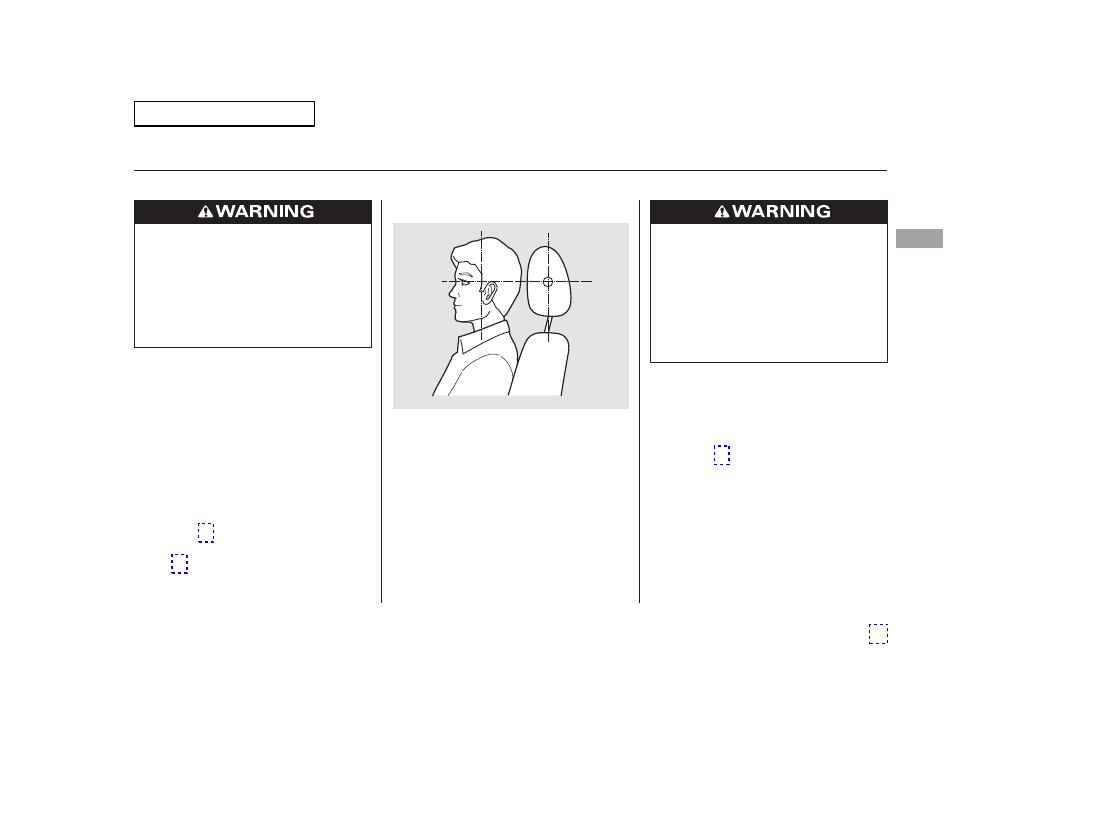Honda Accord Coupe L4 (2011 year). Manual - part 2

Adjust the driver’s head restraint so
the center of the back of your head
rests against the center of the
restraint.
Properly adjusted head restraints
will help protect occupants from
whiplash and other crash injuries.
Reclining a seat-back so that the
shoulder part of the belt no longer
rests against the occupant’s chest
reduces the protective capability of
the belt. It also increases the chance
of sliding under the belt in a crash
and being seriously injured. The
farther a seat-back is reclined, the
greater the risk of injury.
See page
for how to adjust the
manual adjustable seat-back, and
page
for the power adjustable
seat-back.
See page
for how to adjust the
head restraints and how the driver’s
and front passenger’s active head
restraints work.
Have passengers adjust their head
restraints properly as well. Taller
persons should adjust their restraint
as high as possible.
Protecting Adults and Teens
Adjust the Head Restraints
4.
Dr
iv
er
and
P
asseng
er
Saf
e
ty
Improperly positioning head
restraints reduces their
effectiveness and you can be
seriously injured in a crash.
Make sure head restraints are
in place and positioned properly
before driving.
Reclining the seat-back too far
can result in serious injury or
death in a crash.
Adjust the seat-back to an
upright position, and sit well
back in the seat.
Main Menu